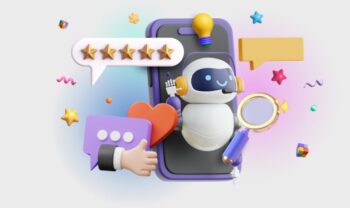Customer service best practices that convert on WhatsApp
Discover how to transform every customer service interaction into a sales opportunity. A complete guide to tone, response times, and strategies to avoid losing prospects.
Customer service on WhatsApp isn't simply about solving problems; it's a strategic opportunity to strengthen relationships, build trust, and convert inquiries into sales. The difference between companies that simply "serve" and those that "convert" lies in the implementation of specific practices that transform each interaction into a memorable experience.
On WhatsApp, where communication is personal and immediate, the quality of your customer service can determine not only current customer satisfaction but also their long-term loyalty and willingness to recommend your business. A single negative interaction can result in customer loss and potential reputational damage, while an exceptional experience can create a customer for life.
This guide will provide you with proven best practices for creating a customer service system that not only resolves issues but also identifies and capitalizes on sales opportunities in every conversation.
Fundamentals of customer service that converts
Effective customer service on WhatsApp is based on fundamental principles that go beyond simple problem resolution. These fundamentals create the foundation for transforming every interaction into an opportunity to strengthen the business relationship.
Proactive service mentality
Customer service that converts adopts a proactive mindset, anticipating customer needs before they express them. This means not only responding to the specific inquiry, but also identifying opportunities to add value, suggest complementary solutions, or prevent future problems.
For example, if a customer inquires about product availability, a proactive response would include information about related products, shipping options, available warranties, and suggestions based on their purchase history. This approach demonstrates expertise and genuine concern for the customer experience.
History-based personalization
Each customer has a unique history of interactions, purchases, and preferences that should be leveraged to personalize service. Using this information demonstrates that you value the relationship and understand their specific needs.
Keep detailed records of previous conversations, products purchased, issues resolved, and preferences expressed. This information allows you to provide contextualized support that feels personal and relevant, significantly increasing the likelihood of conversion.
Focus on solutions, not problems
Customer service that converts focuses on solutions and opportunities rather than limited to the problems presented. Each inquiry is seen as an opportunity to demonstrate value, address broader needs, and strengthen the business relationship.
This requires training your team to think beyond the immediate inquiry and consider how they can add additional value in every interaction. This mindset transforms customer service from a cost center into a revenue generator.
Critical response times to maximize conversions
On WhatsApp, response speed isn't just a customer service metric; it's a critical factor that determines whether a query converts to a sale or is lost to the competition. Customers have developed specific expectations for response times that must be consistently met.
The 5-minute rule
Research shows that responding within the first 5 minutes increases the likelihood of conversion by 40% compared to responses received after 30 minutes. This critical window is when the customer is most engaged and receptive to your proposal.
Implement immediate notification systems that alert your team when new inquiries arrive. During business hours, set a goal for an initial response within 5 minutes, even if it's just to confirm receipt of the message and provide an estimated time for a full response.
Managing expectations after hours
For inquiries that come in outside of business hours, set up automated messages that confirm receipt, provide business hours, and establish clear expectations about when they'll receive a response. This prevents frustration and keeps the conversation going.
An effective after-hours message might be: “Hi! We received your message and really appreciate it. Our business hours are [hours] and we will get back to you first thing tomorrow. If it’s urgent, you can call us at [number] or visit our website for immediate information.”
Proactive monitoring
After resolving a query, implement proactive follow-up to ensure customer satisfaction and identify additional opportunities. This follow-up should occur 24-48 hours after the initial resolution.
Following up not only demonstrates care for the customer experience, but also provides opportunities to identify additional needs, request testimonials, or generate referrals. It's an ideal time to introduce complementary products or related services.
Tone and style of communication that builds trust
The tone of communication on WhatsApp should balance professionalism with human warmth, creating an experience that feels personal yet competent. This balance is crucial to building trust and facilitating conversions.
Professional warmth
Develop a tone that's warm and approachable without being too casual or informal. Use the customer's name, express genuine empathy for their concerns, and maintain positive, solution-focused language.
Avoid excessive technical jargon or rigid corporate language that can create distance. Instead, use clear explanations and relevant examples that help the customer understand the options and benefits.
Active empathy
Active empathy goes beyond simply understanding the customer's problem; it involves demonstrating that you understand the emotional and practical impact of their situation. Use phrases like, "I completely understand your concern" or "I can see how important this is to you."
This empathetic approach creates an emotional connection that facilitates trust and makes customers feel valued and understood. Customers who feel understood are significantly more likely to make purchases and maintain long-term loyalty.
Results-oriented communication
Structure your communications so that they always provide tangible value to the customer. Each message should include useful information, clear next steps, or specific solutions that move the customer closer to their goals.
Avoid messages that simply acknowledge receipt without adding value. Instead, use each interaction to demonstrate expertise, provide useful insights, or identify opportunities to help the customer in ways they hadn't considered.
Smart Escalation: When to Transfer to Human Agents
Effectively escalating conversations from virtual agents to humans is crucial to maintaining service quality while maximizing operational efficiency. Knowing when and how to make this transition can determine the success of the interaction.
Signs of necessary escalation
Identify clear signals that indicate when a conversation requires human intervention. These include expressions of frustration, complex inquiries requiring specialized expertise, high-value sales opportunities, or situations requiring special authorization.
Also consider escalating when the customer specifically requests to speak with a person, when the conversation involves sensitive or personal information, or when significant cross-selling or upselling opportunities are identified.
Seamless transition
The transition between the virtual agent and the human agent should be invisible to the customer. The human agent should receive full context of the conversation, including customer history, products discussed, and any commitments made by the virtual agent.
Use transition phrases like, “I’m going to connect you with [specialist’s name] who has specific expertise in [relevant area] and can best help you with [specific need]. They already have all the information from our conversation.”
Leveraging scaling
Use escalation as an opportunity to demonstrate the value of your personalized service. Customers who receive specialized human attention after their initial interaction with AI often perceive this as premium service.
Train your team to take advantage of these transitions, using the information gathered by the virtual agent to provide highly personalized service that exceeds customer expectations.
Identifying and converting sales opportunities
Every customer service interaction contains potential sales opportunities that can be identified and appropriately developed. The key is to recognize these opportunities without compromising service quality or customer trust.
Active listening to identify needs
Develop active listening skills that allow you to identify needs not directly expressed by the customer. Pay attention to context, incidentally mentioned situations, and underlying problems that could be solved with additional products or services.
For example, if a customer inquires about product repair, this could indicate an opportunity to sell maintenance products, extended warranties, or upgrades that prevent future problems.
Appropriate timing for suggestions
Timing is crucial when presenting upsell opportunities. First, fully resolve the initial inquiry or problem, ensuring customer satisfaction, before introducing additional suggestions.
Use phrases like: “Now that we’ve addressed your main concern, I’d like to mention something that might be helpful to you…” or “Based on what you’ve told me, I think you might also be interested in…”
Genuine added value
All suggestions for additional products or services should provide genuine value to the customer based on their specific needs. Avoid generic or purely sales-like suggestions.
Clearly explain how each suggestion benefits the customer, connecting directly with their expressed needs or particular situation. This approach builds trust and significantly increases the likelihood of conversion.
Continuous measurement and optimization of the service
Continuous improvement in customer service requires systematic measurement of key metrics and optimization based on real data. This ensures that your service constantly evolves toward greater effectiveness and customer satisfaction.
Key customer service metrics
Track specific metrics such as first response time, resolution time, escalation rate, post-interaction customer satisfaction, and conversion of service inquiries to sales. These metrics provide valuable insights into areas for improvement.
It also measures qualitative metrics such as customer sentiment during the conversation, the quality of solutions provided, and the effectiveness of upselling suggestions.
Systematic customer feedback
Implement systems to collect regular customer feedback on their service experience. This can include brief post-interaction surveys, requests for testimonials, or proactive follow-up to assess satisfaction.
Use this feedback to identify patterns, areas for improvement, and opportunities to optimize both your service process and conversion strategies.
With tools like Aurora Inbox, you can automate much of this measurement and optimization process, receiving automatic insights and specific recommendations to improve both service efficiency and conversion rates.



